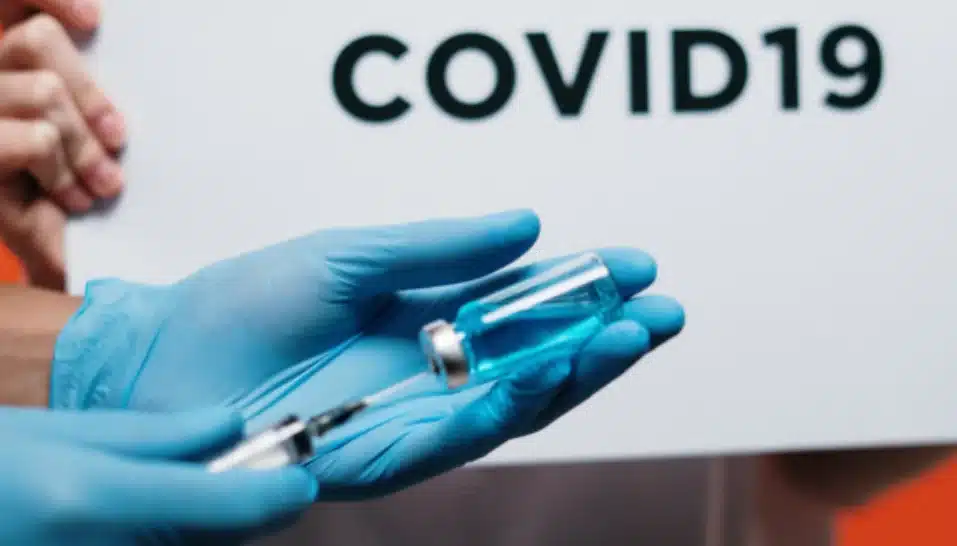Since public rollouts began, COVID-19 vaccines have faced unprecedented backlash, criticism, and often rebuke. Will the sentiment eventually soften?
Global cases and deaths due to COVID-19 have been on a steady decline during the first two weeks of February 2021, and the world has steadily moved into the next stage of its fight against the pandemic – mass vaccinations.
Vaccine development for COVID-19 has turned the conventions upside down. Conventional timelines take decades for a vaccine to get from development to rollout. There’s no HIV vaccine even after nearly four decades of research. For COVID-19, it took less than a year to get multiple vaccines approved and ready for mass inoculation.
The first months of the pandemic were dotted with a sense of urgency for vaccines, as research and development went into overdrive. However, when vaccines did roll out in record time, hesitancy crept in.
How serious is vaccine hesitancy?
Given vaccine hesitancy is a problem that has existed for other vaccines, vaccine acceptance for COVID-19 was seen to be a dicey affair rather early. A fragile information ecosystem with notorious levels of misinformation during the pandemic compounds the challenges during vaccine rollouts.
A global survey published in Nature looked at the potential acceptance of COVID vaccines in 19 countries. The hesitancy of some level was recorded across all age groups. The survey also showed a higher hesitancy if the vaccine was mandated by the responders’ employers.
Concerns spiked when AstraZeneca was forced to pause its trials in September 2020 due to a reported adverse event in a participant. The impact of this single incident in eroding public trust was captured in a study published in the New England Journal of Medicine. The article also elaborated on how a person’s sentiments influence their decision on getting vaccinated.
Vaccine hesitancy has disrupted public health campaigns before. India’s polio vaccination campaigns initially faced rebuff, fearing that it was a mass sterilisation conspiracy by the government. Drop-in vaccinations, as a consequence of refusal, have caused resurgences of totally preventable or otherwise near-absent diseases like tetanus, whooping cough, and measles.
For the current pandemic, therefore, vaccine hesitancy and anti-vaxxers remain a critical threat.
But the side effects are real, right?
All vaccines have true, expected reactions as well as side effects. The ones for COVID-19 are no exception and have a series of typically mild side effects.
There are two main types of adverse reactions after vaccination – local and systemic. The former, localized to the site of injection, occurs immediately after injection and ranges from pain at the site to redness and swelling. These reactions can last up to 48 hours.
Systemic reactions are due to the immune response kicking in. So if there are fever, discomfort, and lethargy after getting a job, it’s just the vaccine teaching the immune cells how to ward off antigens. On the flip side, having no reaction does not mean the vaccine wasn’t effective.
A far less occurrence is anaphylaxis – a severe allergic reaction, symptoms of which include skin rash, nausea, and vomiting. The likelihood of occurrence of anaphylaxis is 1 in 100,000. You have a significantly higher risk of a person dying of COVID-19 at a risk (1 in 780) than getting anaphylaxis after a jab.
The US CDC, too, has reiterated the normalcy of side effects, stating, “the side effects may even feel like flu and might affect your ability to do daily activities.”
Side effects after getting a #COVID19 vaccine are normal signs your body is building protection. Side effects may even feel like flu and might affect your ability to do daily activities, but they should go away in a few days. Watch to learn more: pic.twitter.com/huQ3xNXo5n
— CDC (@CDCgov) December 15, 2020
There were adverse effects, but…?
One of the biggest news on adverse vaccine reactions came from Norway when the country reported that 23 elderly had died after receiving the Pfizer vaccine. The manner of reporting heavily indicated a causal link. A few days later, however, the Norwegian Medicines Agency said no link was found between the vaccine and the recipients’ deaths.
Health Analytics Asia also received a report of a recipient at a private hospital in Northern India getting frequent seizures post-vaccination. It was later revealed that the person had not disclosed his underlying infection, and was suffering from dengue when he got the shot.
The normalcy of mild side effects, as well as the extreme rarity, yet normalcy, of adverse reactions, is a nuance that fails to be communicated through headlines.
How to deal with hesitancy then?
Ending the COVID-19 pandemic relies heavily on the vast majority of people getting vaccinated – a fact asserted by experts from the University of Michigan. Constant, responsible messaging about the benefits, with due acknowledgment of risks, is, therefore, critical to convincing people. The experts add that the key to alleviating fears is for people who get the vaccine to share their experiences to encourage others.
“Vaccines are probably the only way out of this pandemic situation,” said Dr. Siddharth Sridhar of The University of Hong Kong, in a recent interview with Health Analytics Asia.
More vaccine doses have now been administered than the total number of COVID cases. Science, while enduring a learning curve of its own, has been able to defeat this pandemic. And vaccines are a testament to this.

















